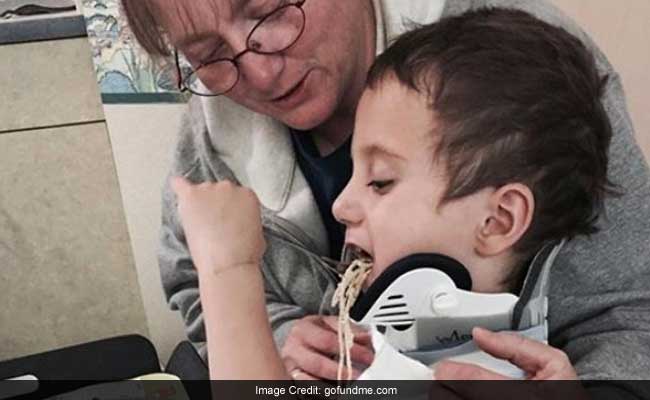It is called “internal decapitation,” and it is what happened to a 4-year-old boy who was recently in a car crash in Idaho. Killian Gonzalez’s skull was separated from his spine in the accident, with a fracture at the base of his skull where the spinal cord connects to the brain stem. Miraculously, the little boy is expected to not only live, but make a full recovery.
Killian’s survival is due to Leah Woodward, who saw the auto accident that injured Killian and his mother, Brandy. Their car was following the Gonzalez’s vehicle when it slid on icy roads and collided head-on with another car. Woodward said that they could hear a small child screaming in the car. Her husband broke open the back window of the wrecked car using a trailer hitch as a club. Woodward crawled in the back window and found a young boy in a booster seat, surrounded by a halo of pinkish fluid that Woodward later found had leaked from the spinal wound.
Woodward’s husband, who is a police officer in Nampa, Idaho, with first responder training, helped Leah stabilize Killian’s neck. She held the boy’s head as still as possible for more than half an hour, until paramedics arrived. She used a blanket to cover the child so his mother could not see how badly he was hurt.
Lead Woodward said, “Thank God Joel knew what was needed because it definitely saved his life on that day.” She said she was panicking inside, and that her first instinct would have been to pick up the boy and try to comfort him.
Gonzalez suffered broken legs and arms. In addition to the decapitation injury, Killian broke his arm and multiple ribs and ruptured his spleen.
The odds of living through an internal decapitation are low. Some studies report a 90 percent death rate. One report found that in 69 cases of internal decapitation, 47 of the injured died instantly and 15 more died at a hospital. Only seven survived. Phillip Tibbs, University of Kentucky neurosurgeon, told ABC News in 2008 that it is rare to survive the injury.
Children are particularly at risk for the injury, because their heads are proportionately large in relation to the bodies. The severity of the injury depends on the amount of damage to the spinal cord, which holds the nerves that connect the brain to the body and run through the spinal column. During an internal decapitation the tough ligaments that hold the skull to the top of the spine are stretched or snapped, separating the skull from the spinal bones. The neck still appears intact from the outside. Surgeons call the injury an occipital-cervical dislocation.
Dr. Nicholas Theodore, who is the Barrow Neurological Institute’s director of spinal surgery, said, “the term ‘decapitation’ in the true sense of cutting someone’s head off is a bit extreme.” He said a child’s head “sort of bobbles,” like a “bowling ball on a stick,” making them more susceptible to the injury.
A gofundme page has been set up to help defray the cost of treatment for Killian and his mother.

